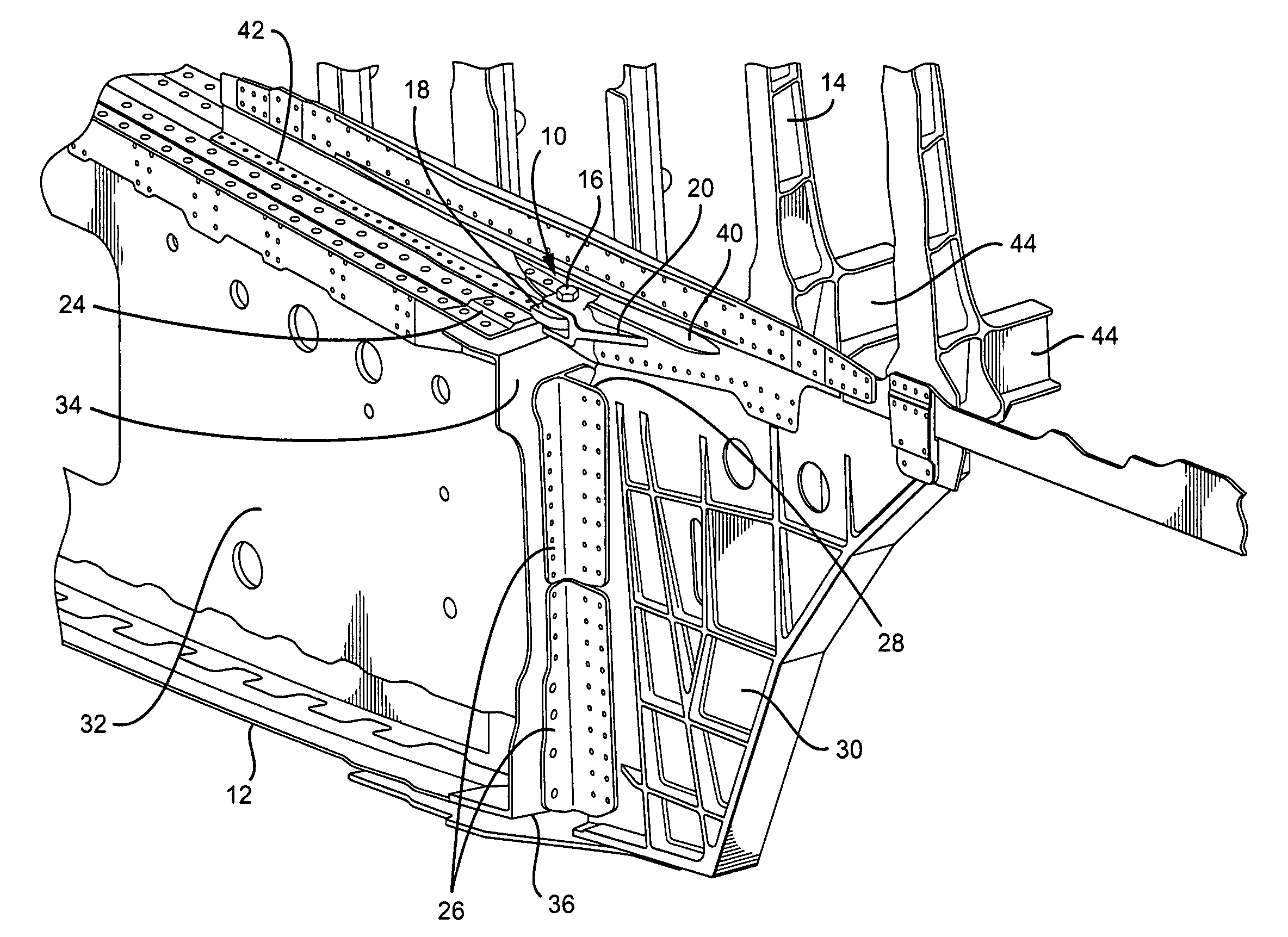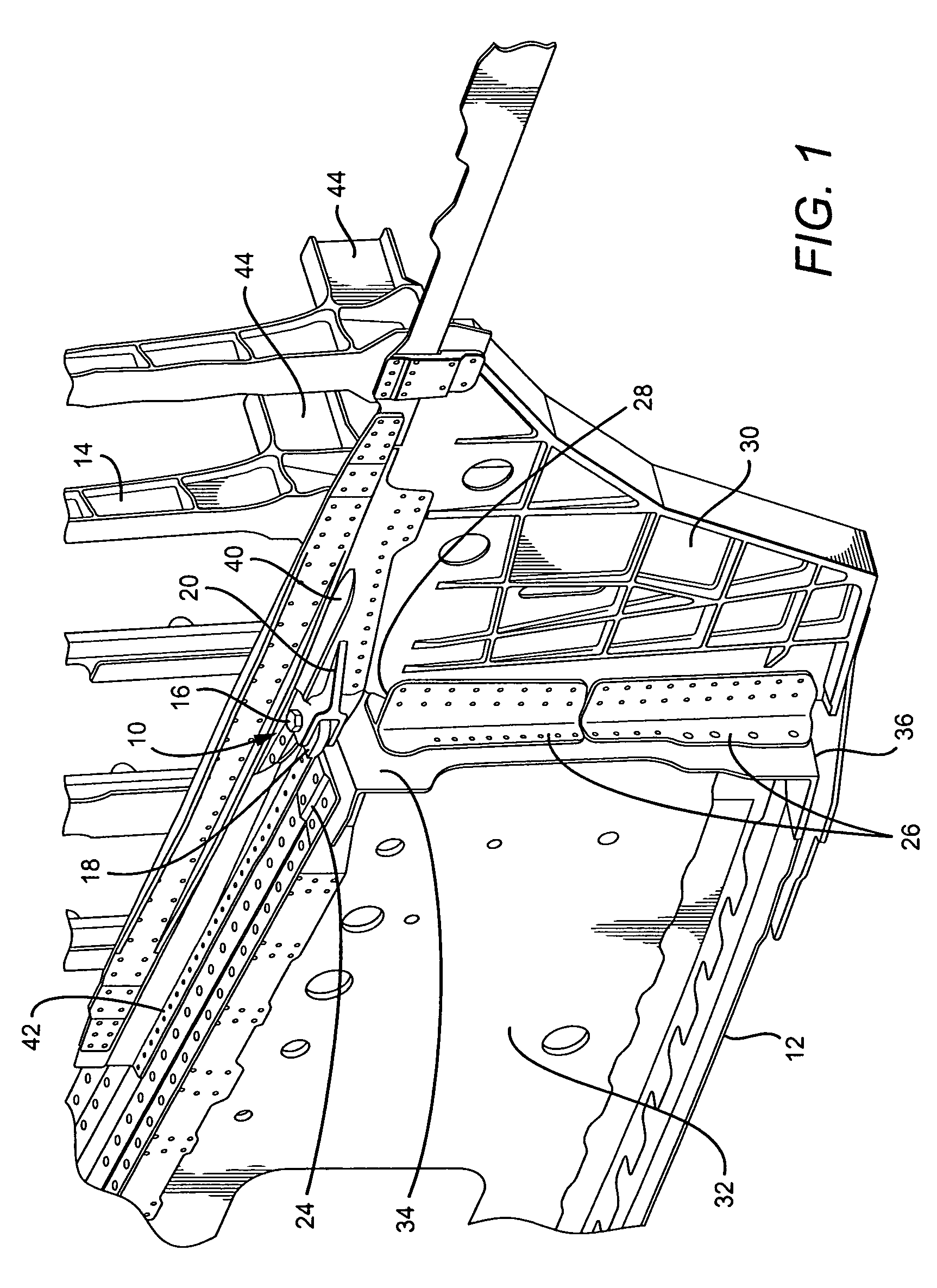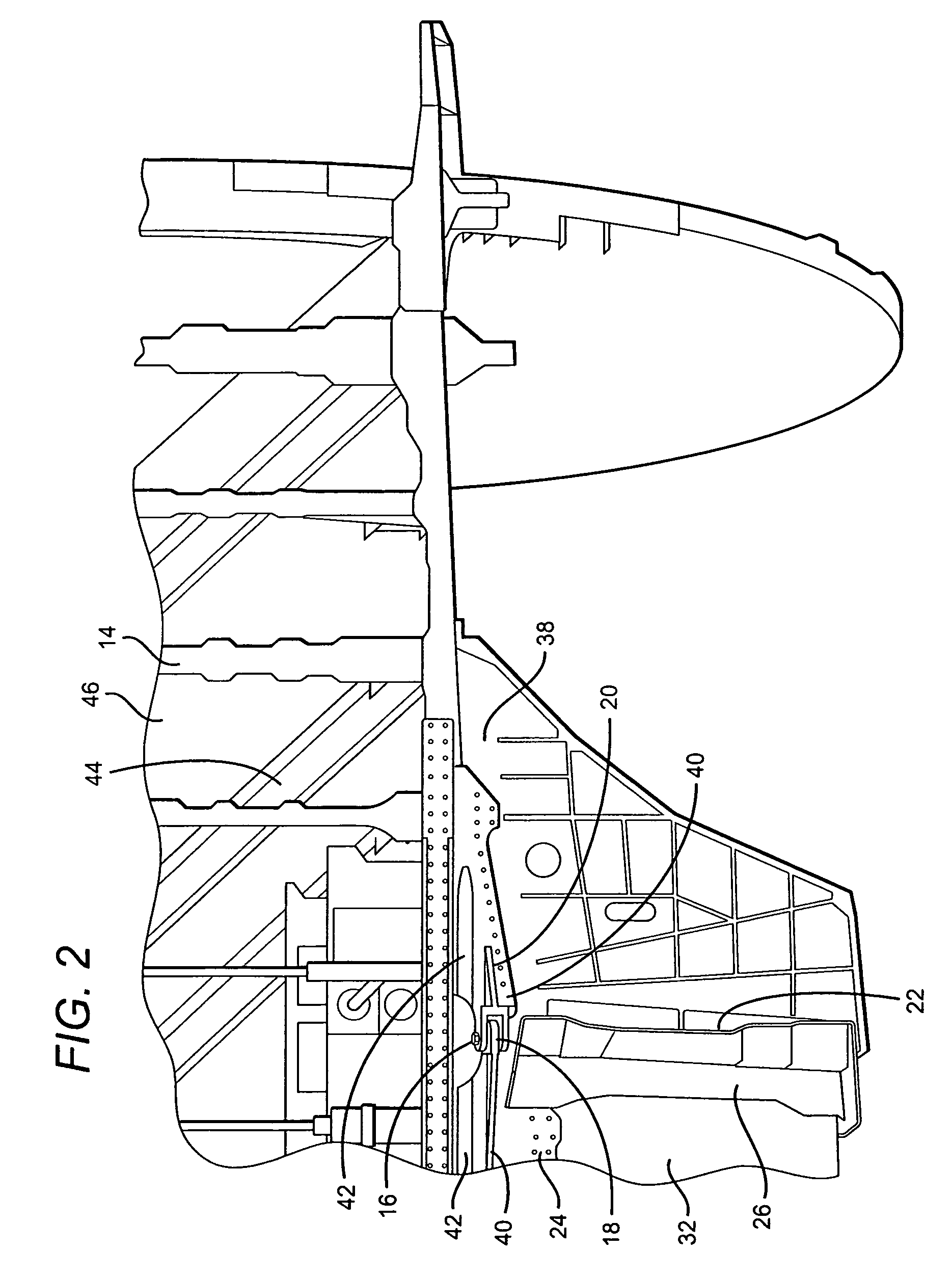Trapezoidal panel pin joint allowing free deflection between fuselage and wing
a technology of fuselage and pin joint, which is applied in the direction of fuselage, aircraft floors, transportation and packaging, etc., can solve the problems of increasing the risk of durability of parts, affecting the design and durability of pin joints, and causing stress on wing and fuselage, so as to reduce the significant weight and significant durability risk, improve the design of pin joints, and reduce the effect of induced stress
- Summary
- Abstract
- Description
- Claims
- Application Information
AI Technical Summary
Benefits of technology
Problems solved by technology
Method used
Image
Examples
Embodiment Construction
[0014]The invention now will be described more fully hereinafter with reference to the accompanying drawings, in which some, but not all embodiments of the invention are shown. Indeed, this invention may be embodied in several different forms and should not be construed as limited to the embodiments set forth herein. Rather, these embodiments are provided so that this disclosure will be thorough and complete and will fully convey the scope of the invention to those skilled in the art. Like numbers refer to like elements throughout.
[0015]Referring now to the drawings, and in particular, to FIG. 1, there is shown a perspective view illustrating a trapezoidal panel pin joint 10 of the invention engaged with a wing portion 12 and a fuselage or body portion 14 of an aircraft. Preferably, the invention is used with large commercial aircraft. However, the invention may also be used with noncommercial aircraft. The pin joint 10 preferably comprises a vertical pin portion 16, a lug portion 1...
PUM
 Login to View More
Login to View More Abstract
Description
Claims
Application Information
 Login to View More
Login to View More - R&D
- Intellectual Property
- Life Sciences
- Materials
- Tech Scout
- Unparalleled Data Quality
- Higher Quality Content
- 60% Fewer Hallucinations
Browse by: Latest US Patents, China's latest patents, Technical Efficacy Thesaurus, Application Domain, Technology Topic, Popular Technical Reports.
© 2025 PatSnap. All rights reserved.Legal|Privacy policy|Modern Slavery Act Transparency Statement|Sitemap|About US| Contact US: help@patsnap.com



